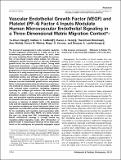| dc.contributor.author | Hang, Ta-Chun | |
| dc.contributor.author | Tedford, Nathan C. | |
| dc.contributor.author | Reddy, Raven J. | |
| dc.contributor.author | Rimchala, Tharathorn | |
| dc.contributor.author | Wells, Alan | |
| dc.contributor.author | White, Forest M. | |
| dc.contributor.author | Kamm, Roger Dale | |
| dc.contributor.author | Lauffenburger, Douglas A. | |
| dc.date.accessioned | 2014-09-03T14:52:21Z | |
| dc.date.available | 2014-09-03T14:52:21Z | |
| dc.date.issued | 2013-09 | |
| dc.date.submitted | 2013-09 | |
| dc.identifier.issn | 1535-9476 | |
| dc.identifier.issn | 1535-9484 | |
| dc.identifier.uri | http://hdl.handle.net/1721.1/89149 | |
| dc.description.abstract | The process of angiogenesis is under complex regulation in adult organisms, particularly as it often occurs in an inflammatory post-wound environment. As such, there are many impacting factors that will regulate the generation of new blood vessels which include not only pro-angiogenic growth factors such as vascular endothelial growth factor, but also angiostatic factors. During initial postwound hemostasis, a large initial bolus of platelet factor 4 is released into localized areas of damage before progression of wound healing toward tissue homeostasis. Because of its early presence and high concentration, the angiostatic chemokine platelet factor 4, which can induce endothelial anoikis, can strongly affect angiogenesis. In our work, we explored signaling crosstalk interactions between vascular endothelial growth factor and platelet factor 4 using phosphotyrosine-enriched mass spectrometry methods on human dermal microvascular endothelial cells cultured under conditions facilitating migratory sprouting into collagen gel matrices. We developed new methods to enable mass spectrometry-based phosphorylation analysis of primary cells cultured on collagen gels, and quantified signaling pathways over the first 48 h of treatment with vascular endothelial growth factor in the presence or absence of platelet factor 4. By observing early and late signaling dynamics in tandem with correlation network modeling, we found that platelet factor 4 has significant crosstalk with vascular endothelial growth factor by modulating cell migration and polarization pathways, centered around P38α MAPK, Src family kinases Fyn and Lyn, along with FAK. Interestingly, we found EphA2 correlational topology to strongly involve key migration-related signaling nodes after introduction of platelet factor 4, indicating an influence of the angiostatic factor on this ambiguous but generally angiogenic signal in this complex environment. | en_US |
| dc.description.sponsorship | National Science Foundation (U.S.) (NSF EFRI grant 735997) | en_US |
| dc.description.sponsorship | National Institutes of Health (U.S.) (NIH Cell Migration Consortium grant GM06346) | en_US |
| dc.description.sponsorship | National Institutes of Health (U.S.) (NIH Cell Decision Processes Center grant GM68762) | en_US |
| dc.description.sponsorship | National Institutes of Health (U.S.) (NIH grant GM69668) | en_US |
| dc.description.sponsorship | National Institutes of Health (U.S.) (NIH grant GM81336) | en_US |
| dc.language.iso | en_US | |
| dc.publisher | American Society for Biochemistry and Molecular Biology (ASBMB) | en_US |
| dc.relation.isversionof | http://dx.doi.org/10.1074/mcp.M113.030528 | en_US |
| dc.rights | Creative Commons Attribution | en_US |
| dc.rights.uri | http://creativecommons.org/licenses/by/3.0/ | en_US |
| dc.source | Molecular & Cellular Proteomics | en_US |
| dc.title | Vascular Endothelial Growth Factor (VEGF) and Platelet (PF-4) Factor 4 Inputs Modulate Human Microvascular Endothelial Signaling in a Three-Dimensional Matrix Migration Context | en_US |
| dc.type | Article | en_US |
| dc.identifier.citation | Hang, T.-C., N. C. Tedford, R. J. Reddy, T. Rimchala, A. Wells, F. M. White, R. D. Kamm, and D. A. Lauffenburger. “Vascular Endothelial Growth Factor (VEGF) and Platelet (PF-4) Factor 4 Inputs Modulate Human Microvascular Endothelial Signaling in a Three-Dimensional Matrix Migration Context.” Molecular & Cellular Proteomics 12, no. 12 (December 1, 2013): 3704–3718. | en_US |
| dc.contributor.department | Massachusetts Institute of Technology. Department of Biological Engineering | en_US |
| dc.contributor.department | Massachusetts Institute of Technology. Department of Mechanical Engineering | en_US |
| dc.contributor.mitauthor | Hang, Ta-Chun | en_US |
| dc.contributor.mitauthor | Tedford, Nathan C. | en_US |
| dc.contributor.mitauthor | Reddy, Raven J. | en_US |
| dc.contributor.mitauthor | Rimchala, Tharathorn | en_US |
| dc.contributor.mitauthor | White, Forest M. | en_US |
| dc.contributor.mitauthor | Kamm, Roger Dale | en_US |
| dc.contributor.mitauthor | Lauffenburger, Douglas A. | en_US |
| dc.relation.journal | Molecular & Cellular Proteomics | en_US |
| dc.eprint.version | Final published version | en_US |
| dc.type.uri | http://purl.org/eprint/type/JournalArticle | en_US |
| eprint.status | http://purl.org/eprint/status/PeerReviewed | en_US |
| dspace.orderedauthors | Hang, Ta-Chun; Tedford, Nathan C.; Reddy, Raven J.; Rimchala, Tharathorn; Wells, Alan; White, Forest M.; Kamm, Roger D.; Lauffenburger, Douglas A. | en_US |
| dc.identifier.orcid | https://orcid.org/0000-0002-1545-1651 | |
| dc.identifier.orcid | https://orcid.org/0000-0002-7232-304X | |
| dc.identifier.orcid | https://orcid.org/0000-0002-3856-7454 | |
| mit.license | PUBLISHER_CC | en_US |
| mit.metadata.status | Complete | |
